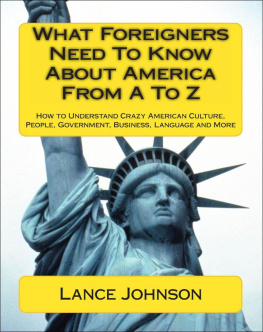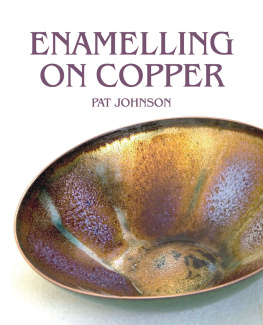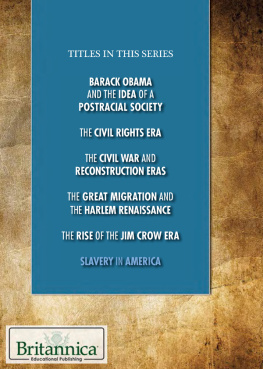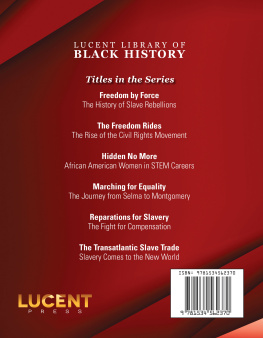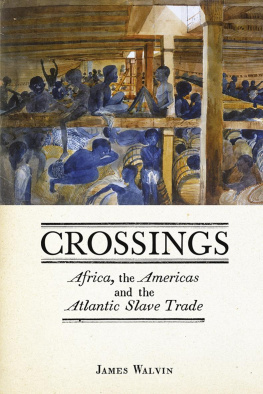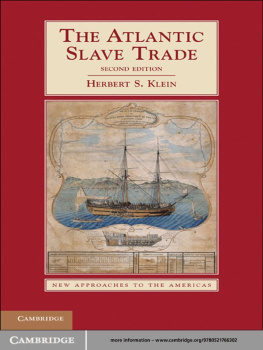The Chattel Principle
Since its founding in 1998, Yales Gilder Lehrman Center for the Study of Slavery, Resistance and Abolition has sponsored an annual international conference on some major aspect of the Atlantic slave system and its destruction. Topics have varied from a comparison of the often neglected internal or domestic slave trades in the U.S., Brazil, and the British West Indies to the controversial but widespread arming of slaves from antiquity to the American Civil War. Because the research and discoveries presented in these conferences do so much to enrich our knowledge of humanitys most dehumanizing institution and its place in the founding of the modern world, as well as the first historical movements for civil rights, we are immensely grateful to Yale University Press for publishing the edited papers of our conferences. These conference volumes are designed not only for the scholarly community but for the wider public which, after years of being misled and kept in the dark concerning the centrality of racial slavery on the global scale, has expressed a growing interest in this grim subject. The Gilder Lehrman Center, which is part of the Yale Center for International and Area Studies, is supported by Richard Gilder and Lewis Lehrman through the Gilder Lehrman Institute for American History in New York City. We are especially dedicated to the translation of scholarly information into public knowledge through publications, educational outreach, and other programs and events.
David Brion Davis, Director
Edited by
WALTER JOHNSON
The Chattel Principle
INTERNAL SLAVE TRADES IN THE AMERICAS

Copyright 2004 by Yale University.
All rights reserved.
This book may not be reproduced, in whole or in part, including illustrations, in any form (beyond that copying permitted by Sections 107 and 108 of the U.S. Copyright Law and except by reviewers for the public press), without written permission from the publishers.
Set in Sabon Roman type by Keystone Typesetting, Inc., Orwigsburg, Penn. Printed in the United States of America by Sheridan Books, Ann Arbor, Michigan.
Library of Congress Cataloging-in-Publication Data
The chattel principle : internal slave trades in the Americas / edited by Walter Johnson.
p. cm.
Papers from the first Gilder Lehrman Center international conference held at Yale University in Oct. 1999.
Includes bibliographical references and index.
ISBN 0-300-10355-7 (pbk. : alk. paper)
1. SlaveryUnited StatesHistory19th centuryCongresses. 2. SlaveryWest Indies, BritishHistory19th centuryCongresses. 3. SlaveryBrazilHistory19th centuryCongresses. 4. Slave tradeUnited StatesHistory19th centuryCongresses. 5. Slave tradeWest Indies, BritishHistory19th centuryCongresses. 6. Slave tradeBrazilHistory19th centuryCongresses. I. Johnson, Walter, 1967II. Gilder Lehrman Center for the Study of Slavery, Resistance, and Abolition.
E449.C48 2004
306.362091812dc22
2004057608
A catalogue record for this book is available from the British Library.
The paper in this book meets the guidelines for permanence and durability of the Committee on Production Guidelines for Book Longevity of the Council on Library Resources.
10 9 8 7 6 5 4 3 2 1
To my mother and the memory of my father
Contents
Walter Johnson
Adam Rothman
Daina Ramey Berry
Robert H. Gudmestad
Steven Deyle
Michael Tadman
Lacy Ford
Edward E. Baptist
Phillip Troutman
Seymour Drescher
Hilary McD. Beckles
Manuel Barcia Paz
Richard Graham
Robert W. Slenes
Foreword
DAVID BRION DAVIS
When Americas black slaves suddenly learned that they were about to be sold and transported to some unknown region to the west or the south, few of them were literate or free enough to convey their sense of horror and despair to spouses or other family members on different plantations. Yet in 1852 a slave named Maria Perkins of Charlottesville, Virginia, wrote a profoundly depressing letter to her husband: Dear Husband I write you a letter to let you know my distress my master has sold albert [her son] to a trader on Monday court day and myself and other child is for sale also and I want you to let [me] hear from you very soon before next cort if you can.... I dont want a trader to get me they asked me if I had got any person to buy me and I told them no they took me to the court house too they never put me up a man buy the name of brady bought albert and is gone I dont know where.... I dont expect to meet with the luck to get that way till I am quite heartsick nothing more I am and ever will be your kind wife Maria Perkins.
The mention of a trader refers to the large number of professional domestic slave traders who transported hundreds of thousands of slaves from states such as Virginia to the lower Mississippi valley and Texas, where by the late 1850s they could be sold at prices equivalent to those of todays new cars. Maria Perkinss only hope was that her husband could persuade one Doctor Hamelton or his master to purchase her before she was taken to another auction at the courthouse, but it is almost certain that she was swept into the enormous tidal wave that moved a total of a million or more slaves from their original places of residence to the Old Southwest. As it happened, the 1850s also saw the beginning of a similar massive internal slave trade in Brazil, which had stopped the further importation of slaves from Africa despite the soaring demand for such labor in the coffee-producing regions far to the southwest of localities such as Bahia, where the majority of slaves were still concentrated.
When Harriet Beecher Stowe and earlier antislavery writers sought to expose the worst evils of American slavery, they concentrated on the agonizing breakup of slave familiesthe separation of spouses such as Maria Perkins and her husband, the wrenching sale of parents away from their children, and the severe suffering and mortality of long coffles of chained slaves as they were marched hundreds of miles overland or crammed into ships that sailed from southeastern harbors southward and then around the Florida Keys to New Orleans or other distant ports. Nevertheless, in recent times historians have tended to highlight the horrors of the transatlantic slave trade, a subject worthy of such attention, but then to portray a relatively static institution in which movement was peripheral at best. That is the way southern slave-holders, who tended to despise slave traders, wished to think of their labor system. The ideal of planter paternalism could be maintained only if the monetary negotiations with traders were kept in the dark. But of course, as time went on and as the demand for and price of slaves kept soaring in the Old Southwest, planters became more open about such transactions.
This was the background for the choice of domestic passages as the subject of the first Gilder Lehrman Center international conference at Yale University in October 1999. Remembering that British abolitionists succeeded in limiting the flow of slaves from the older Caribbean colonies to new frontier zones such as Trinidad and Guiana and that some American abolitionists contended that the Constitution allowed Congress to regulate or stop the interstate trade in slaves, the participants concluded that a comparison of internal slave trades in the United States, the British West Indies, and Brazil would perfectly suit their mission to explore and clarify transnational histories of slavery, resistance, and abolition.
Next page

